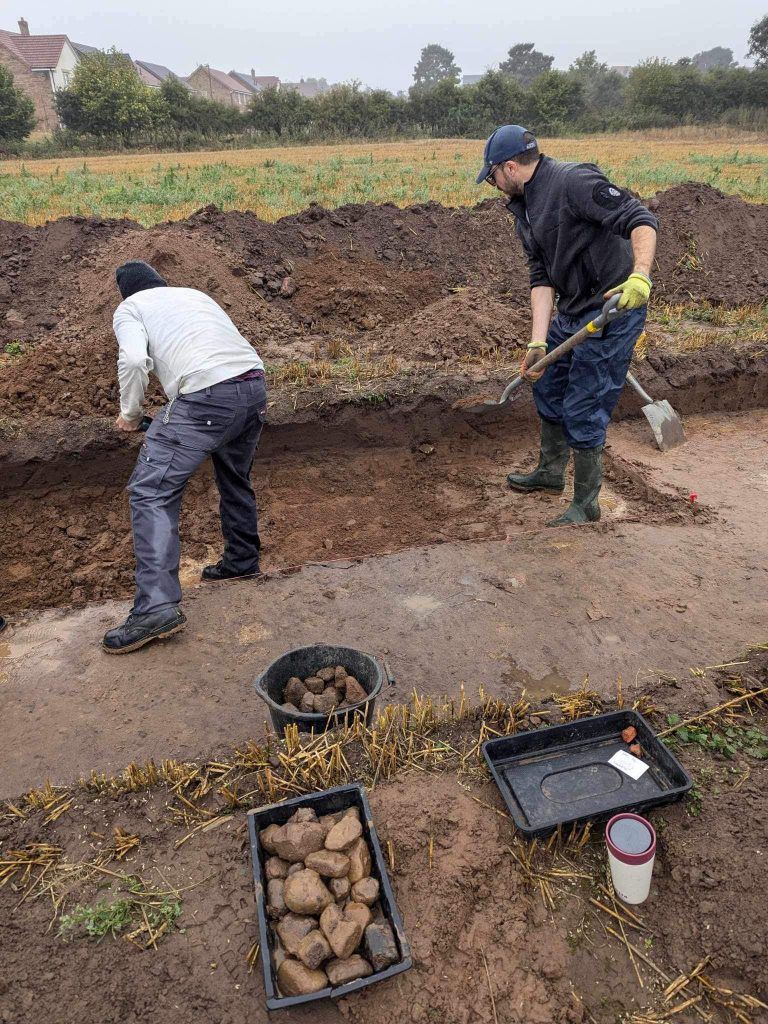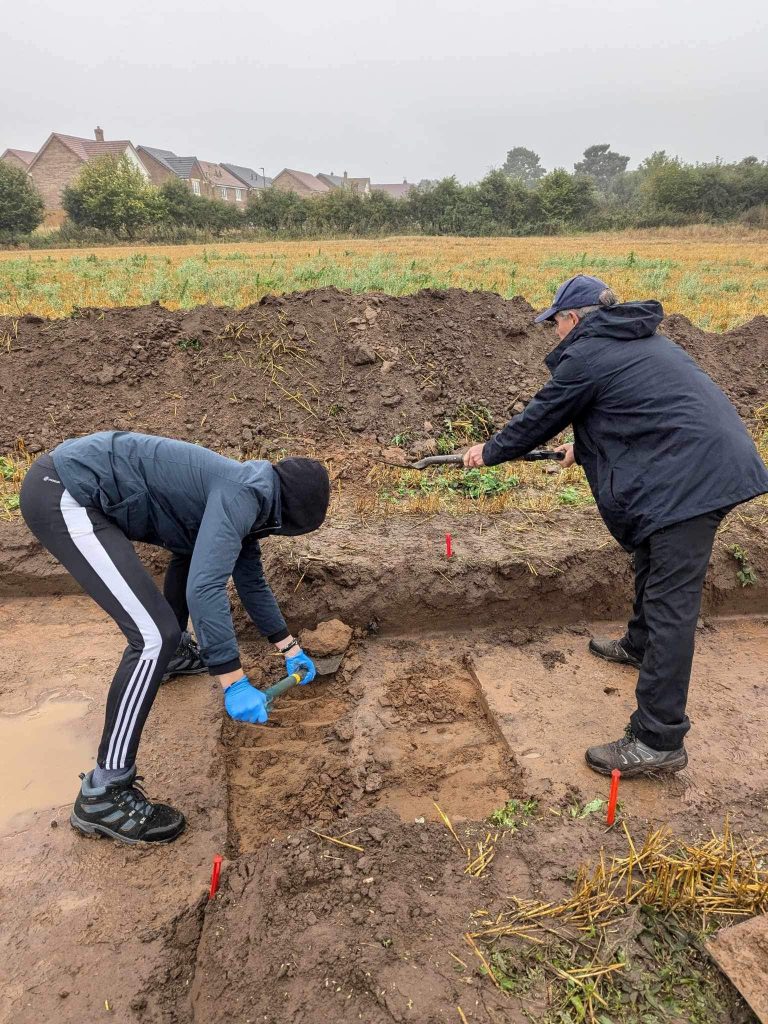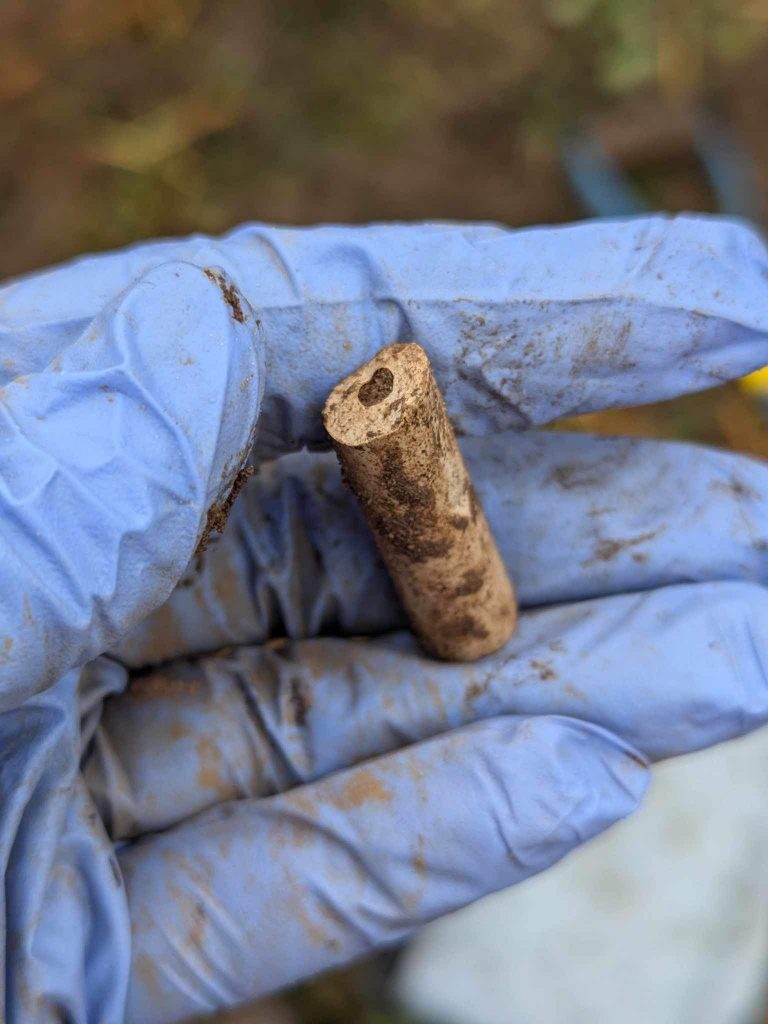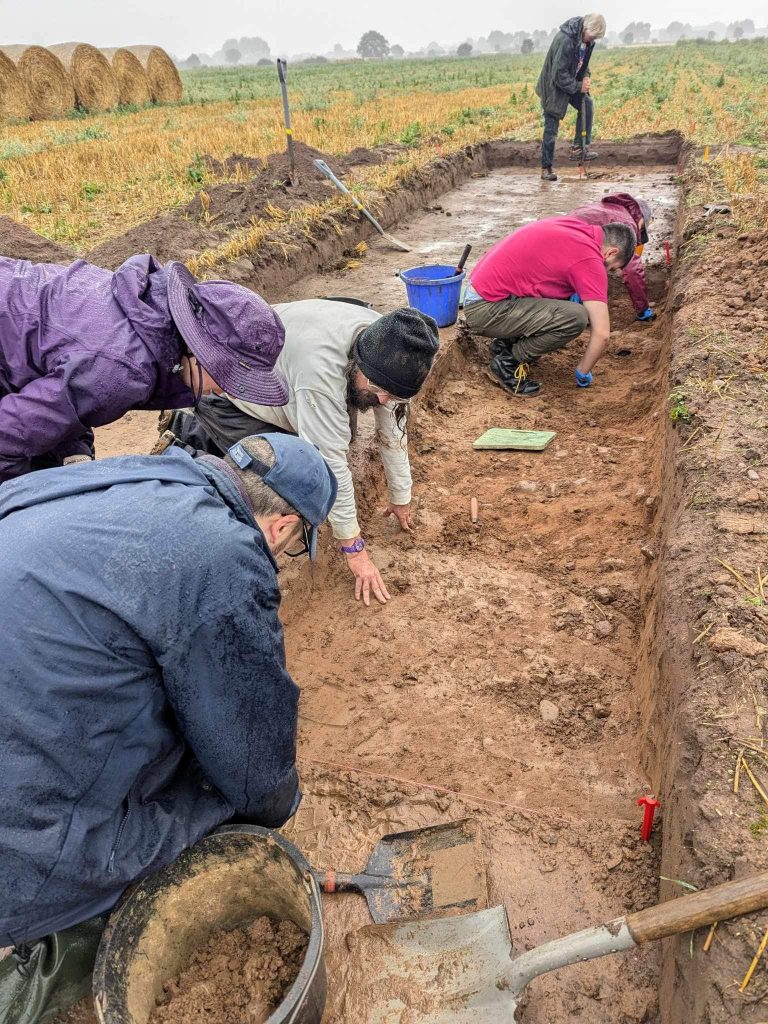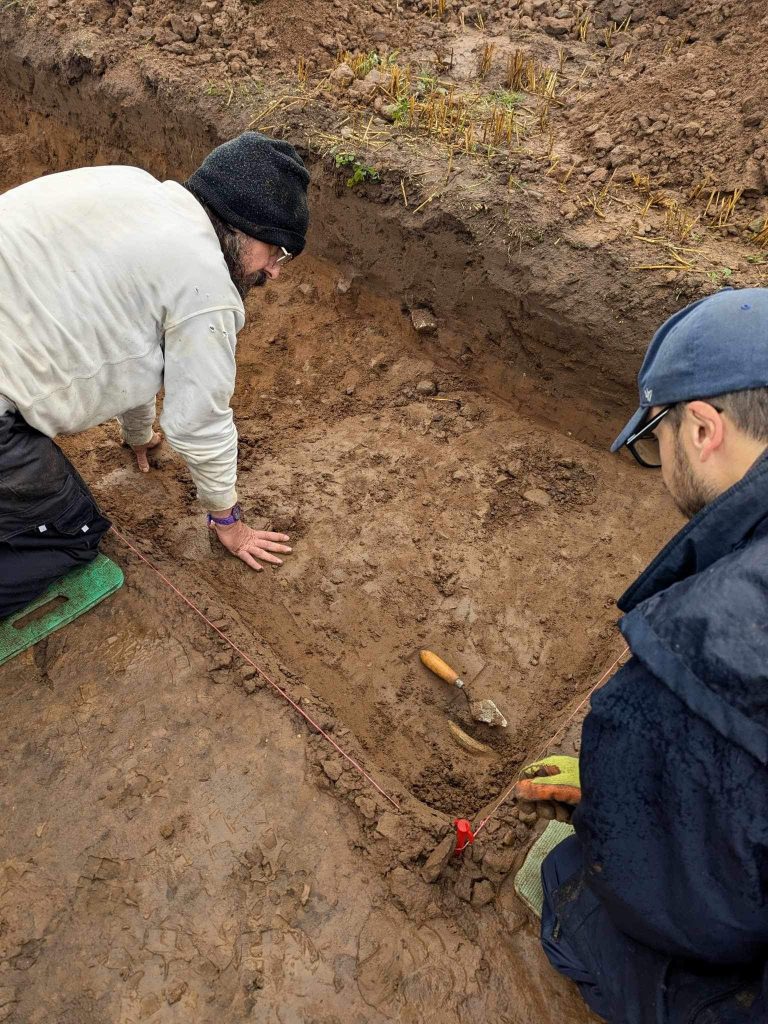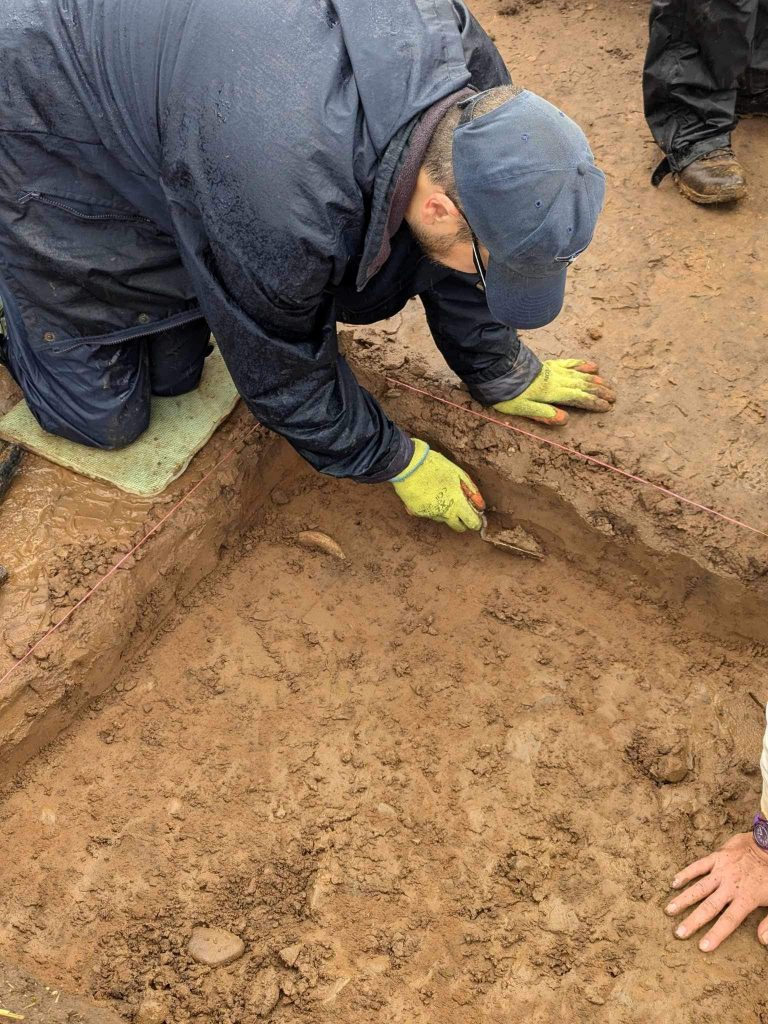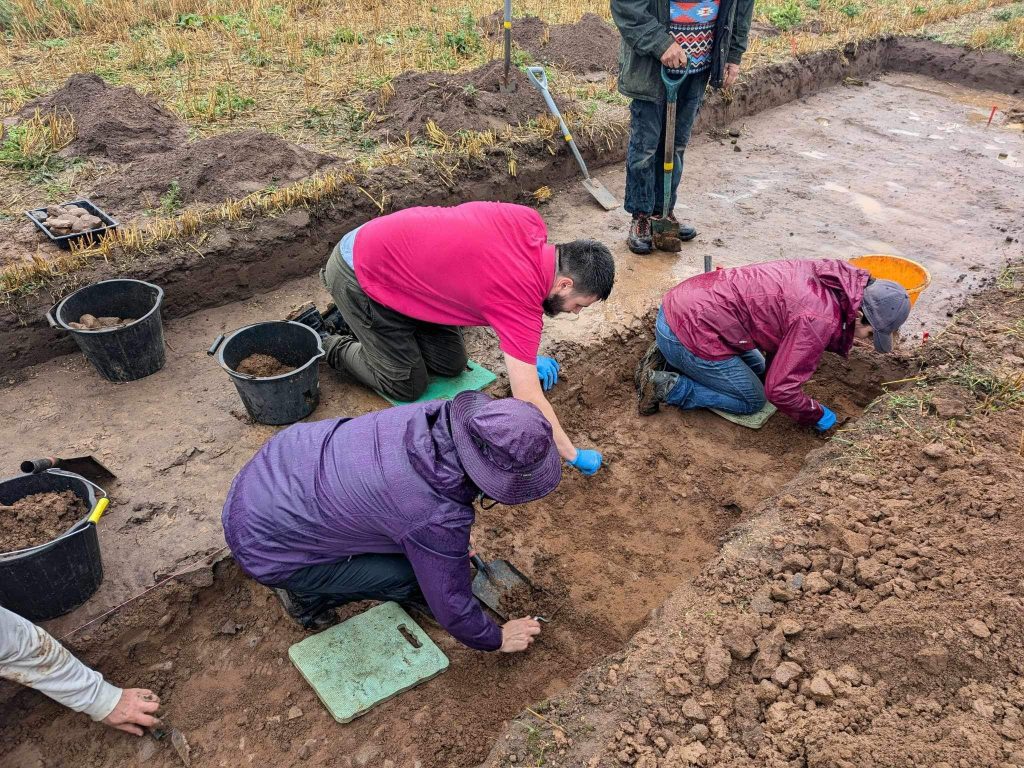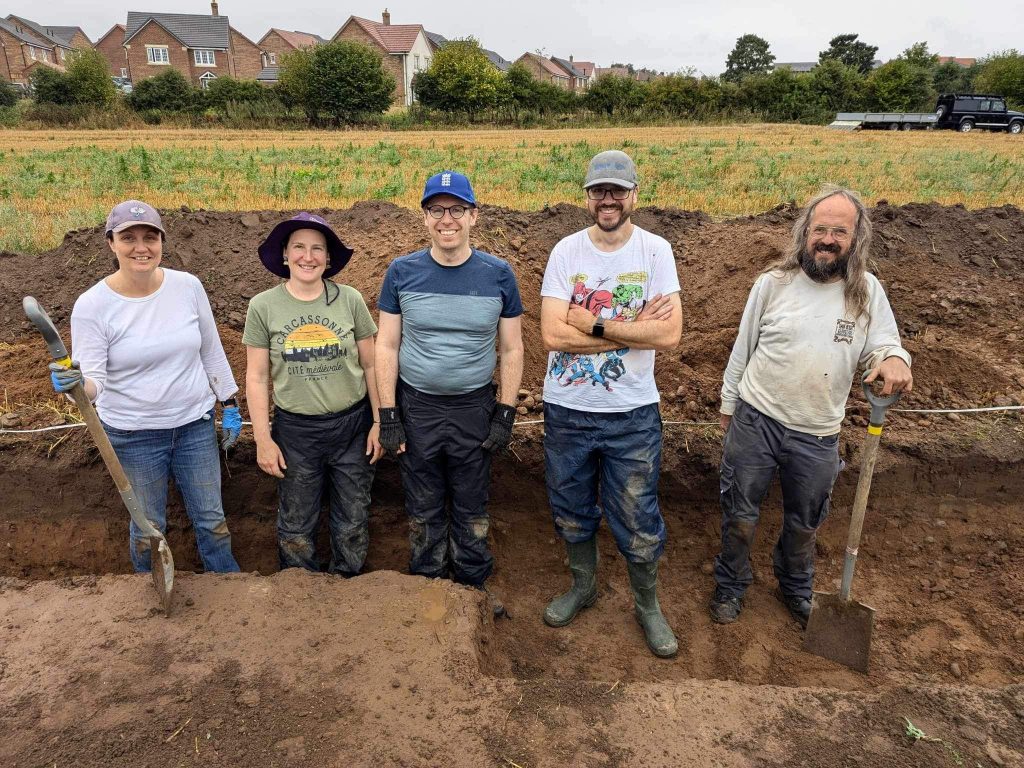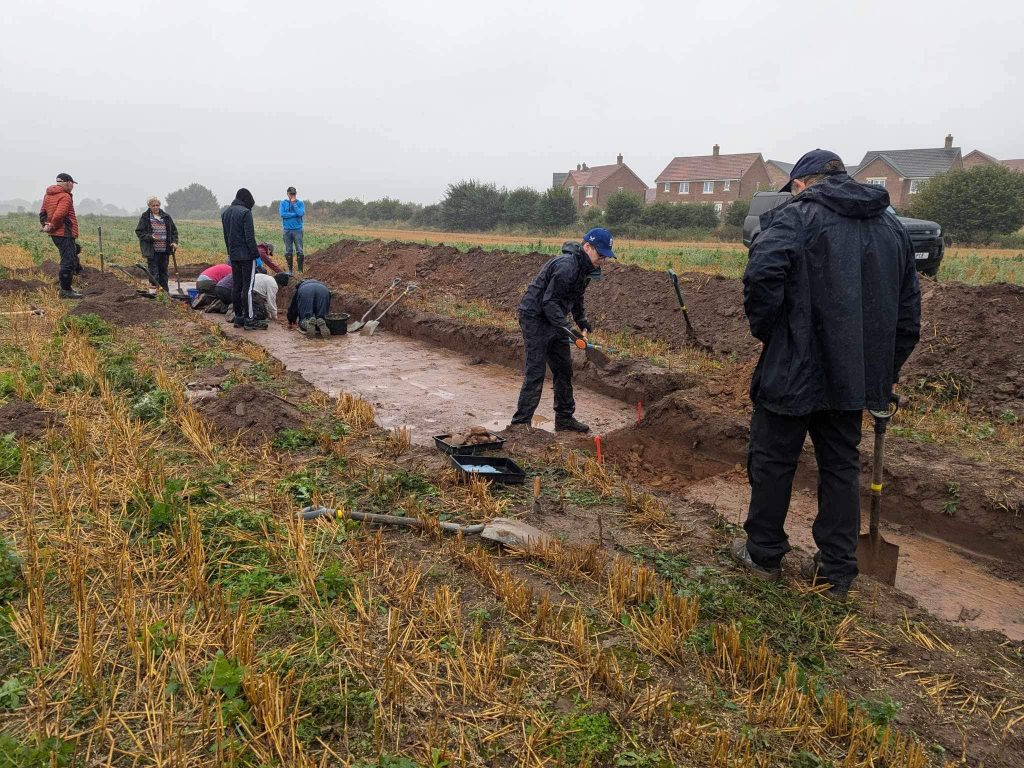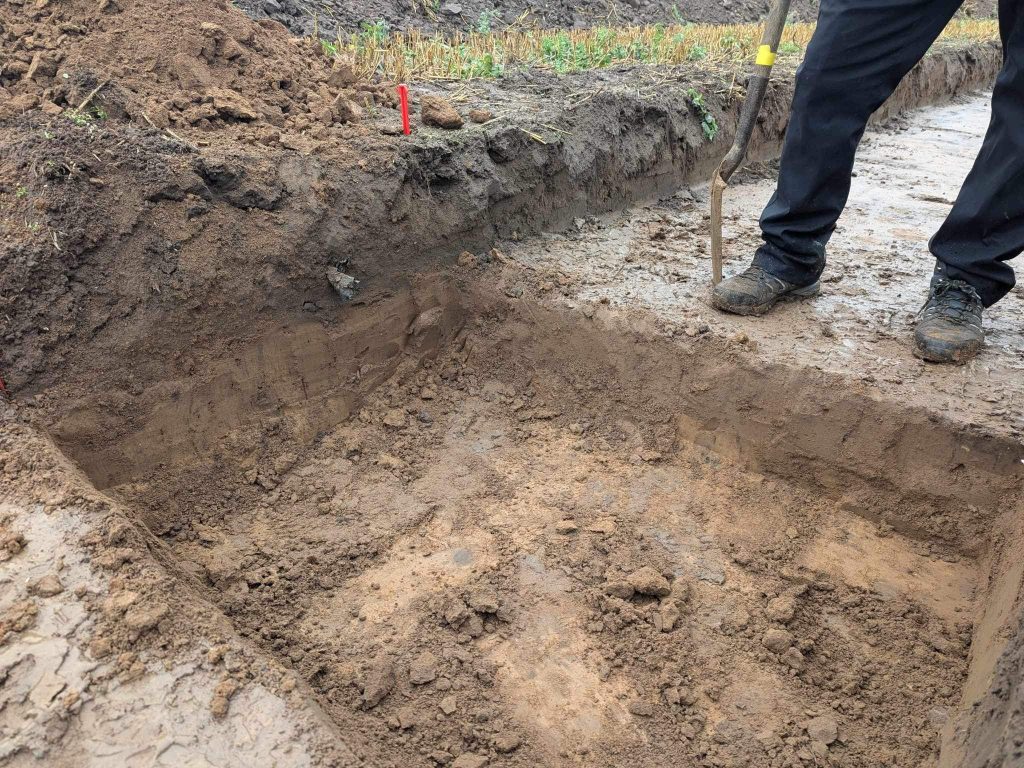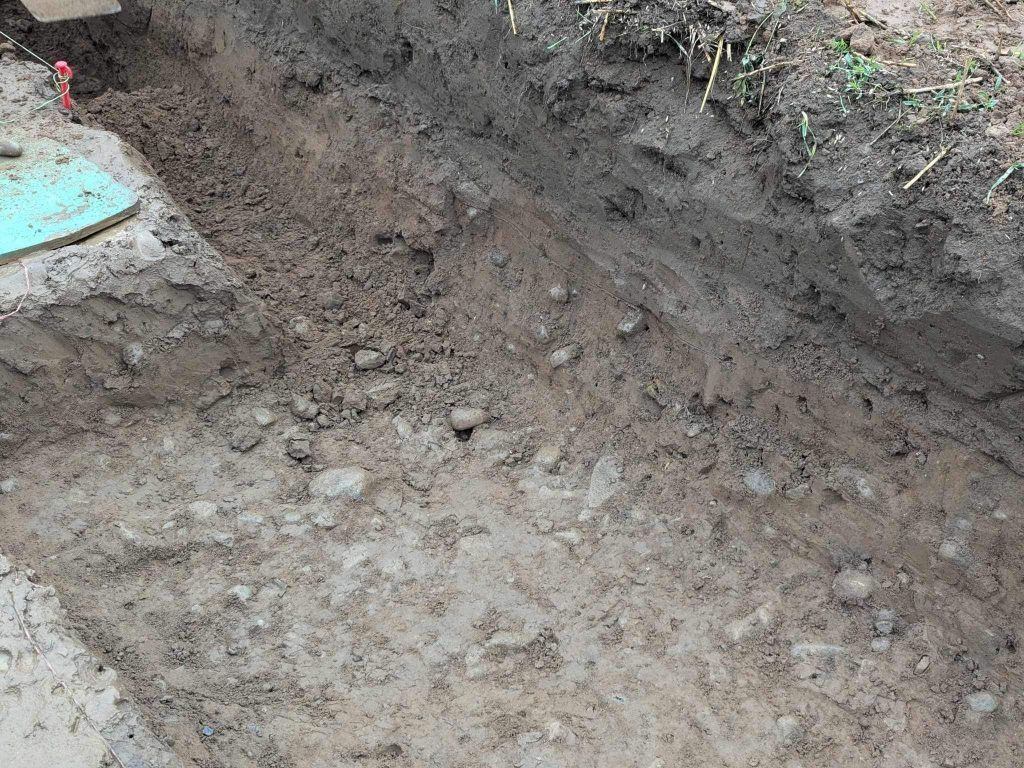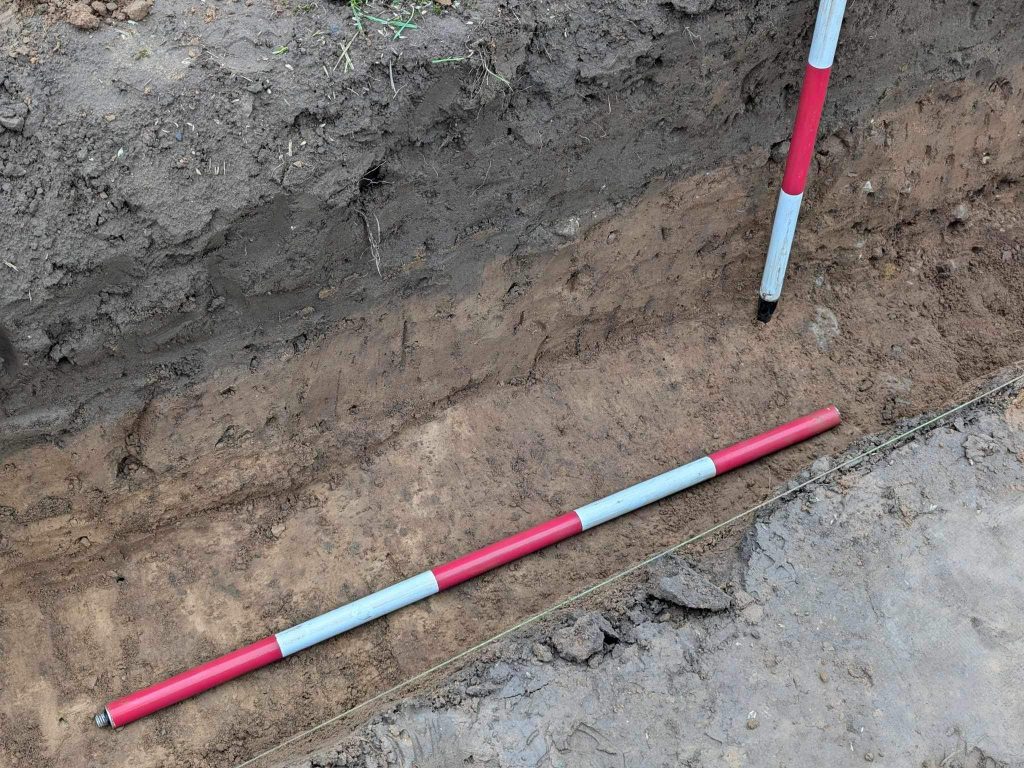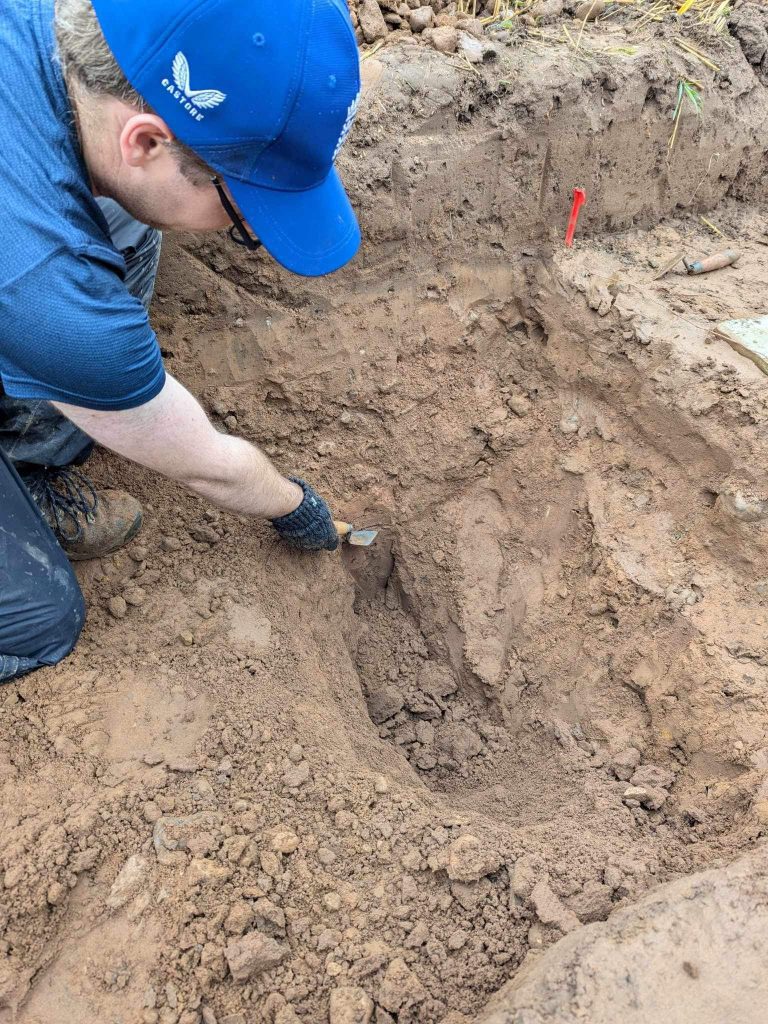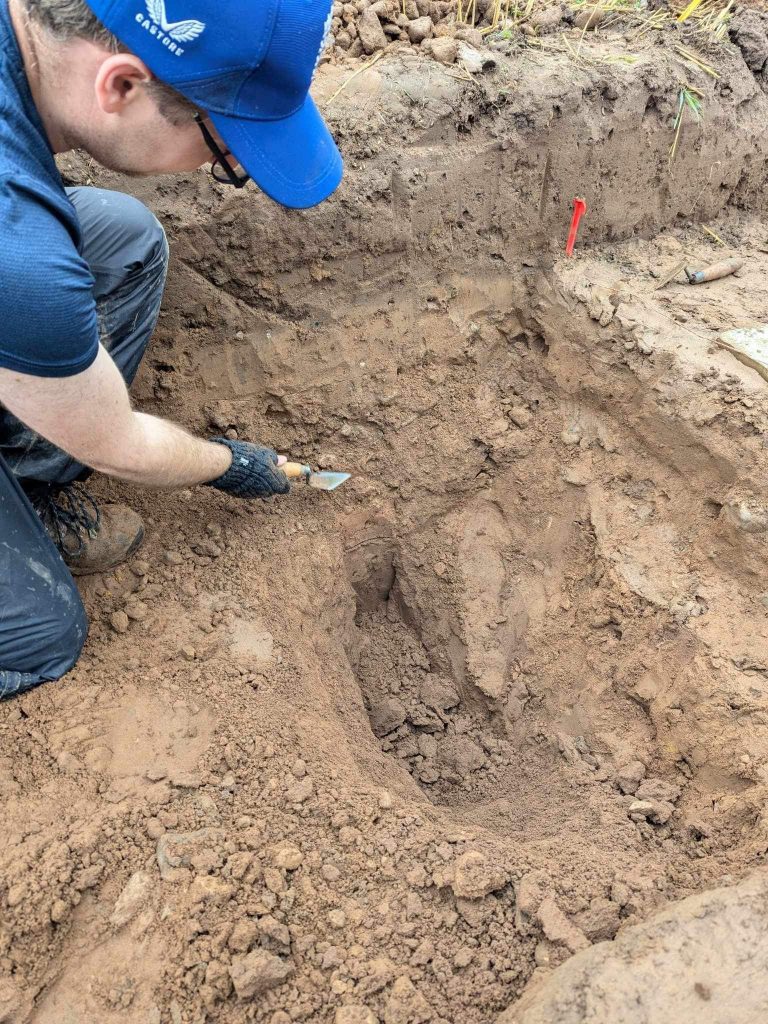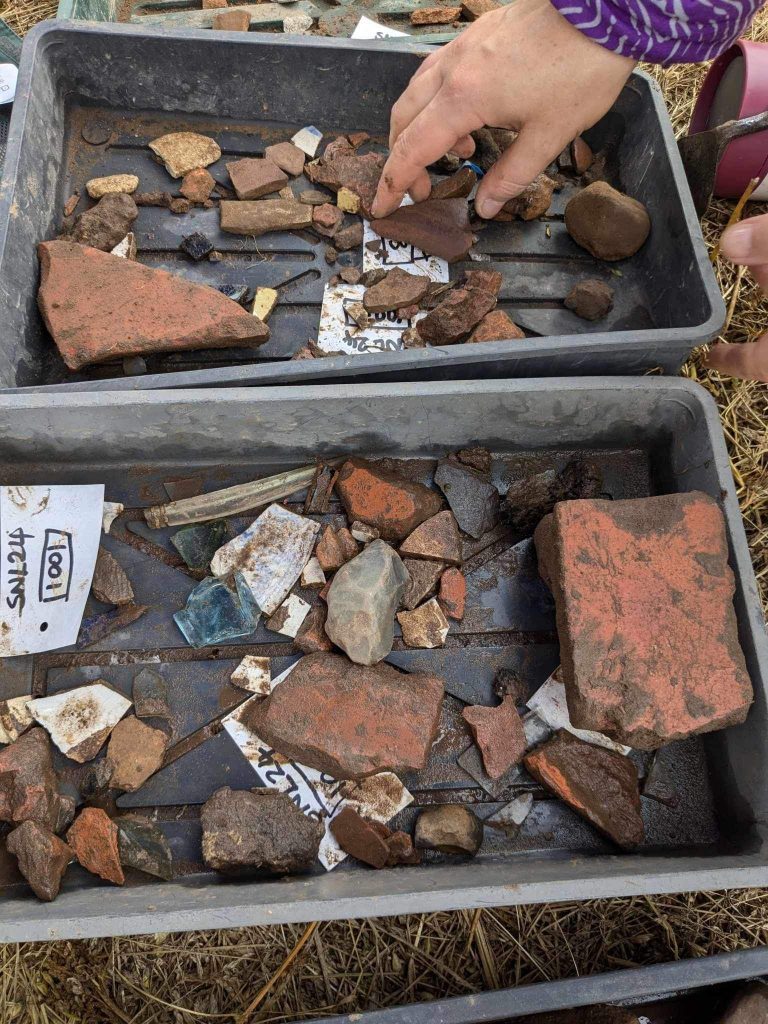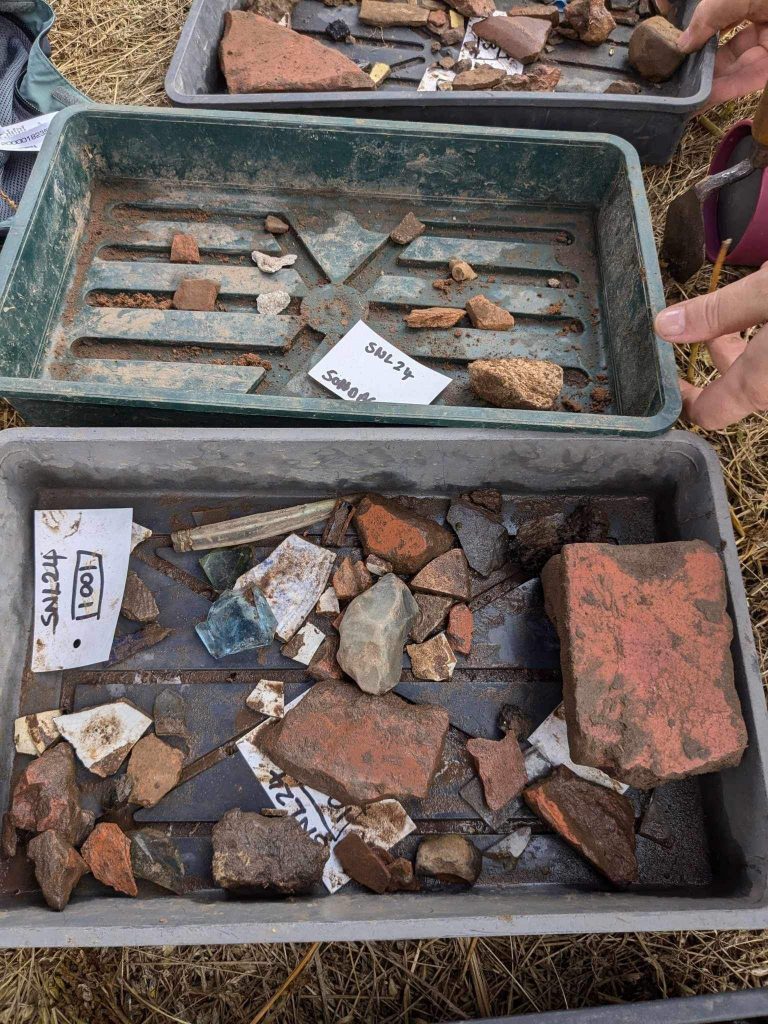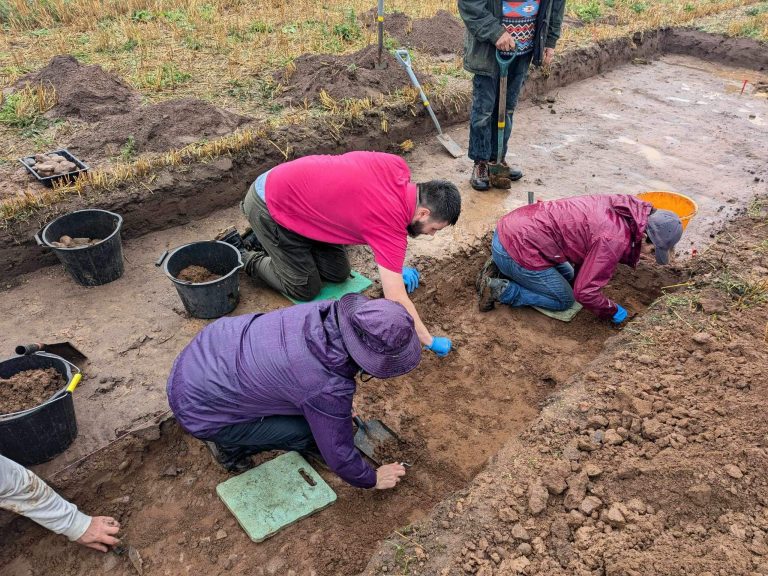Last weekend we undertook our first excavation, excavating the surface of the Roman road in Green Hammerton.
The work was split over two days, and we were very well guided by Jon Kenny to make sure we were doing things properly.
Day 1
Local resident Chris was on hand first thing to take off the top layer of the surface with his mini-digger. This was an absolute godsend as it saved us a lot of work and meant we could have a larger trench with little additional effort. A big thanks go out to Chris for his help!

After taking the top soil off, we got down to a more orangey brown layer, which seemed darker brown (where we expected to find the road) in the centre of the trench and an orangey brown at the sides. First steps were to tidy up the trench sections and then to trowel back the top layer.
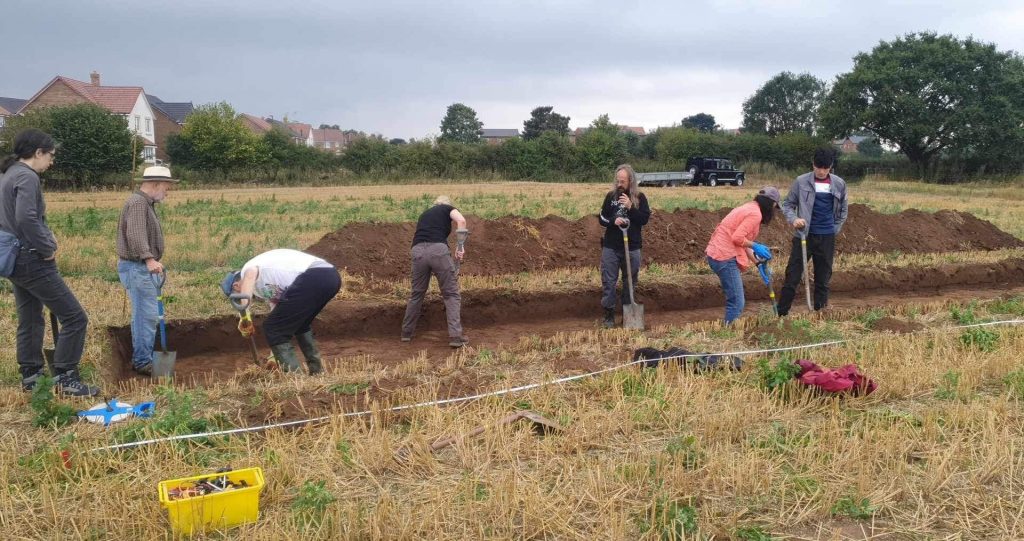

After the first troweling, we were not seeing anything more conclusive, so we went ahead with a second troweling over to go a little deeper. As we got towards the end of the day, we started to get to a more stony layer.
Intriguing work on the first day, but no Roman road yet.
From a finds perspective on day 1, we had a few more modern bits (bricks, tiles), some glass, and a couple of pieces of what looks like Northern grittyware (8th-12th century).

Day 2 –
Day 2 started off pretty damp, but it had mostly stopped raining by the time we started work. The stones we began to come across yesterday did turn out to be something interesting!
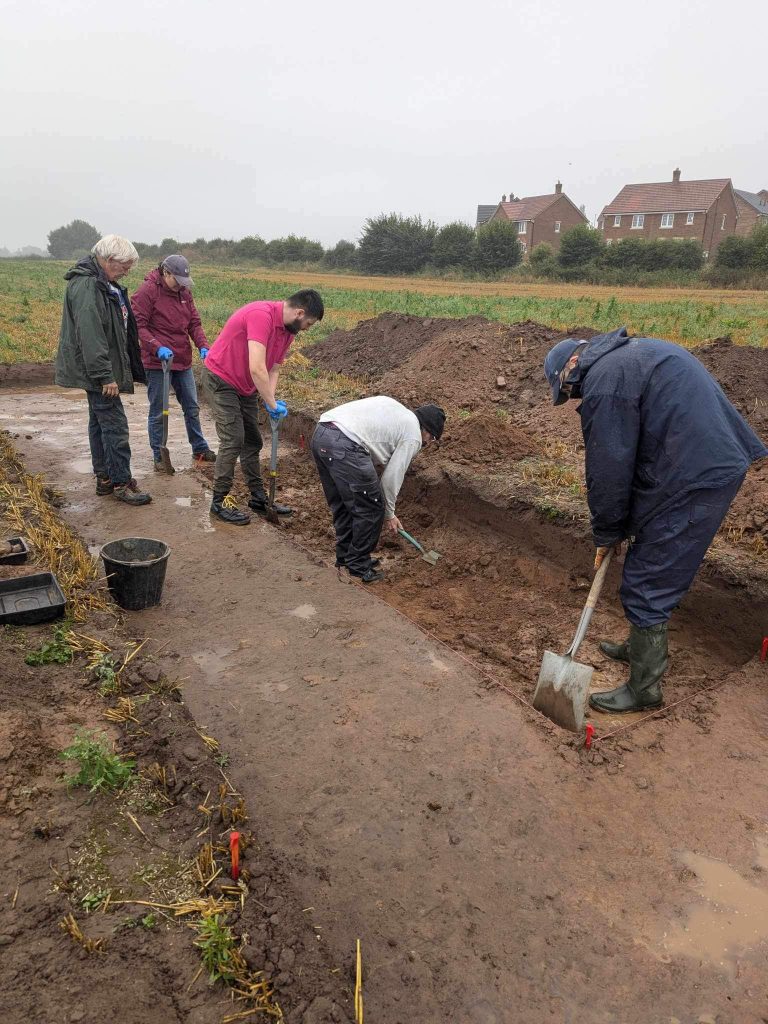

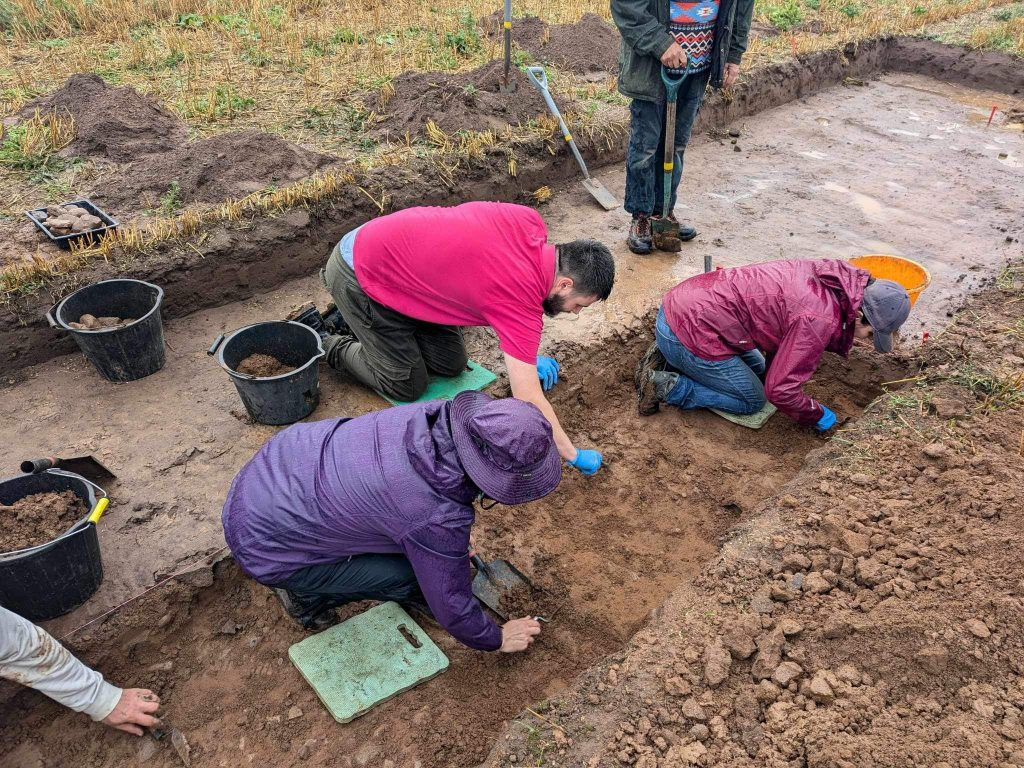
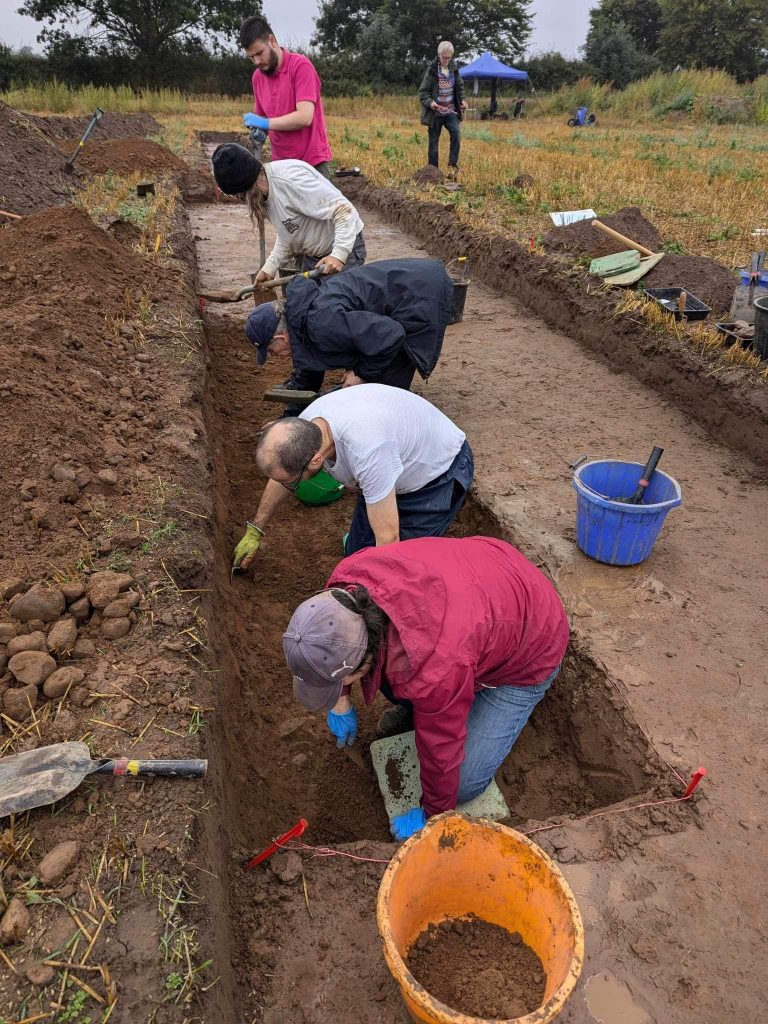

We dug additional depth and our trench indicated a layer of cobbles in the area that the aerial analysis had indicated the road traversed the field. It’s a little hard to see from the photo above, but there was clearly a stony layer which we believe is part of the Roman Road.
In addition we dug some sondages (mini trenches within the trench):
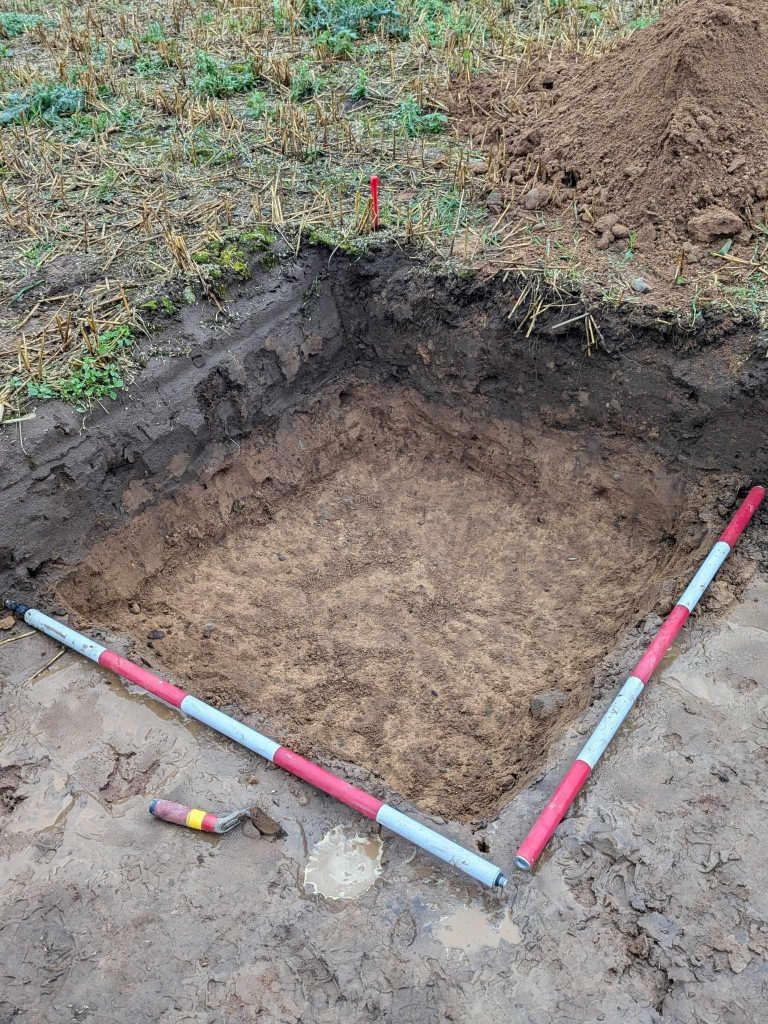
This was to confirm this cobble pattern was not found elsewhere – suggesting the cobbles we’d found could be part of the Roman Road once used to join York to Aldborough via Green Hammerton.
Still very limited on other finds from the Roman period but we did uncover a handle from a medieval green glazed jug towards the side of the presumed path of the road.
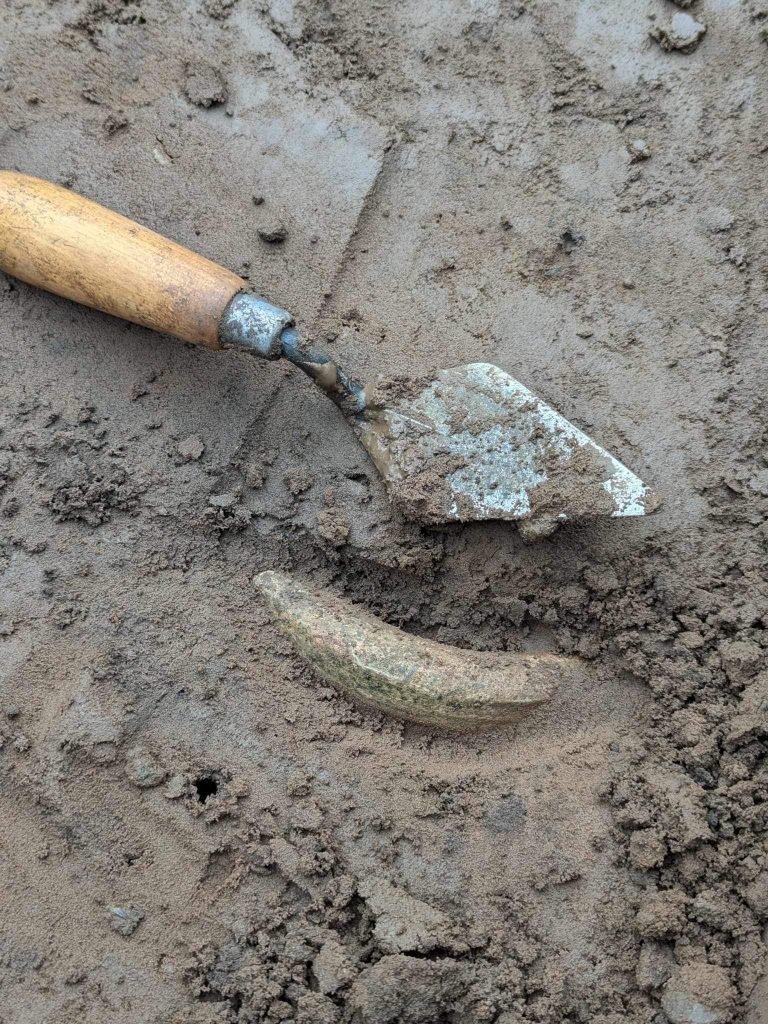

Next steps now will be to clean and identify the finds, and write up the fieldwork properly.
A big thanks to:
-All the volunteers who came to take part in the fieldwork
-Councillor Arnold Warneken for supporting us
-Jon Kenny, community archaeologist, for supporting us with direction, advice and equipment
-Chris Eaton for helping us with the digger
